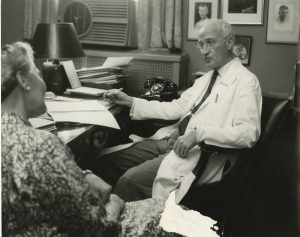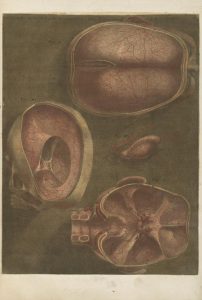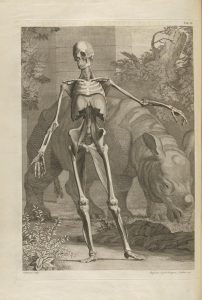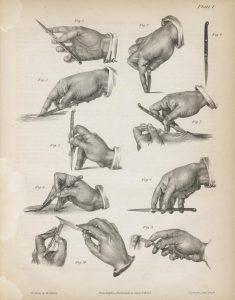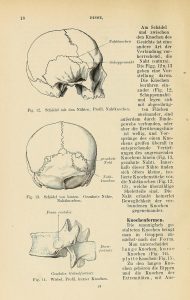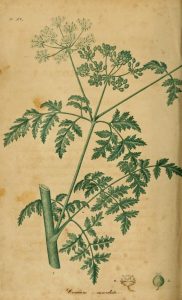The Augustus C. Long Health Sciences Library has recently added several important volumes in the history of medicine to the Medical Heritage Library. Though the Health Sciences Library participated in MHL’s Sloan Foundation and NEH funded digitization projects, the size of these items precluded them being digitized at that time.

From the Albinus anatomy.
Bernhard Siegfried Albinus’ monumental anatomical atlas of 1749, Tabulae Sceleti et Musculorum Corporis Humani [Plates of the Skeleton and Muscles of the Human Body], is one of the best-known works in the history of anatomy. It features striking engravings of human skeletons standing before tombs, cherubs, and the first living rhinoceros to reach Europe.
Another volume includes two works by Jacques Gautier-D’Agoty: Anatomie de la Tête (1748) [Anatomy of the Head] and Myologie Complette en Couleur (1746) [Complete Myology in Color]. Gautier-D’Agoty was an artist and engraver, not an anatomist, and his works, while scientifically unimportant, are noted for their bold use of color and sometimes weird and fantastic images of the human body.

From the D’Agoty anatomy.
Joseph Pancoast’s Treatise on Operative Surgery (Philadelphia, 1844) is a landmark of 19th century American surgical writing. It’s particularly noted for its excellent chapters on plastic surgery, but also contains significant sections on neurological and ophthalmic operations. The 486 illustrations on 80 plates are known for their accuracy and detail and made this work an American medical best-seller with about 4,000 copies sold over nine years.

From the Pancoast treatise.
The digitization of these works is a collaborative effort among the Columbia University Libraries’ departments. It is part of an ongoing project to restore and repair larger quarto and folio rare books held by the Health Sciences Library’s Archives & Special Collections. The volumes are first treated by professional conservators at Columbia University Libraries’ Conservation Laboratory. They are then digitized by the Imaging Laboratory, part of the Libraries’ Preservation & Digital Conversion Division.
Besides being accessible through the Medical Heritage Library, the volumes can be found via CLIO, the Columbia University Libraries Online Public Access Catalog.
The Health Sciences Library’s conservation project is funded by the Jerome P. Webster Endowment, bequeathed to the Library by Dr. Webster, Columbia’s first professor of plastic surgery, prominent historian of medicine, and bibliophile.
As always, for more from the Medical Heritage Library, please visit our full collection!






